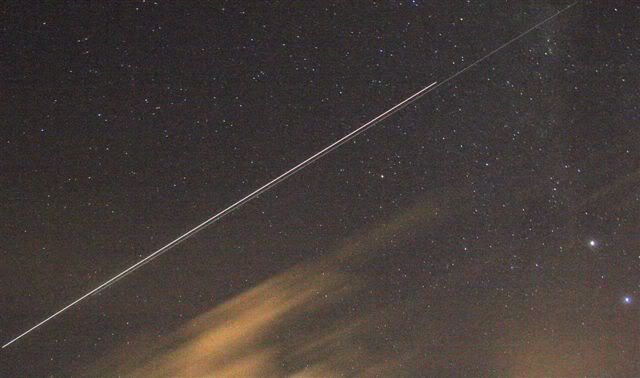sheepie wrote:Hell - hadn't even thought about doing something like this! Great thinking! Do you think the space station looks brighter now with the solar panels out?
The brightness or
magnitude that you'll see will depend on a number of things ... the angle of the reflection of sunlight, how big and "shiny" the reflecting surface is and where you are located on Earth at the time.
sheepie wrote:It's a pity you've cut the Southern Cross out of the one from tonight - that really would have made this shot

I took that shot from my back yard but unfortunately
Crux itself was hidden behind a tree.

sheepie wrote:Finally, how come the shuttle's trail goes all the way through the shot, while the station's trail doesn't?
If you look closely you'll notice that the shuttle's trail ends roughly the same distance as the ISS trail begins. This just marks the point where the camera's shutter opened & closed. This was the second shot that I took during this pass. After the first shot, I had to shift the camera angle to shoot again. Unfortunately I didn't swing the camera as far as I needed to get the ISS to enter the view from outside the shot this time.
Dargan wrote:StarGazer Out of technical interest, can you enlighten amateurs like myself how you set up the shot, cheers for your efforts too
BTW 
I refer to the
Heavens-Above website to find out when a satellite is passing over my place. Once I know the time, direction (Az.) and how high up from the horizon I need to look (Alt.) it's just a simple case of setting up the camera on a tripod, aiming it towards the area of sky that the satellite will pass through, wait for the satellite to appear (looks like a bright moving "star") and, with the camera set on
bulb, start your exposure ... See?
Simple!  Btw
Btw, you can also use your video camera.
Iridium Flares are fun to try and capture ... example
HERE (1.6Mb video file)





